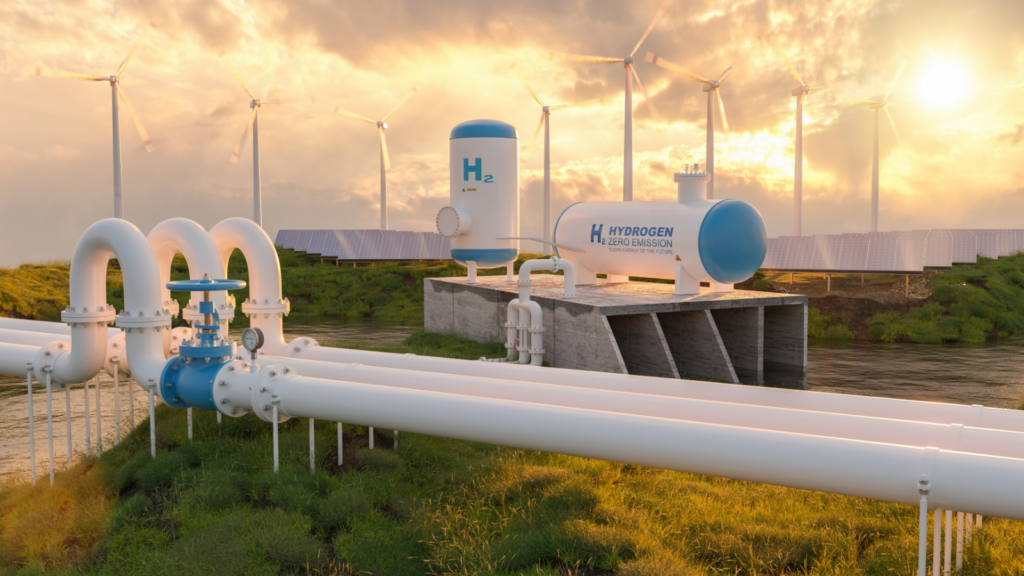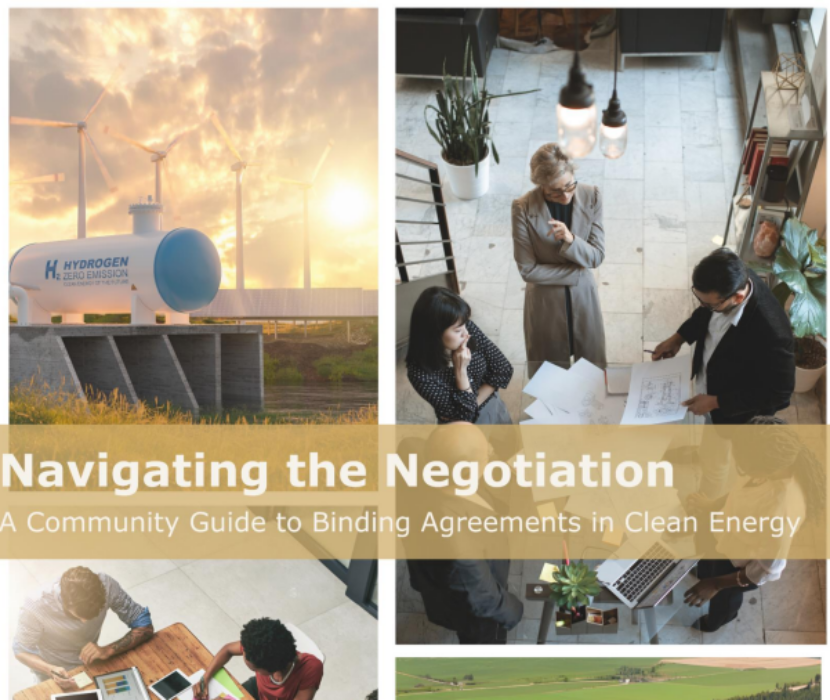
Recent legislation is moving clean hydrogen hubs closer to reality and stimulating buzz nationwide for their role as a decarbonization solution. So, what’s all the hydrogen “hubbub” about, anyway?
In October 2023, the U.S. Department of Energy (DOE) announced the awardees of $7 billion for seven regional hydrogen hubs in the United States. This funding comes from the 2021 Bipartisan Infrastructure Law (BIL), which authorized $9.5 billion for clean hydrogen. The 2022 Inflation Reduction Act (IRA) further incentivizes clean hydrogen through a production tax credit, known as 45V, for projects with life-cycle emissions below 4 kilograms of CO2 equivalent per kilogram hydrogen. The IRA also expands the 45Q tax credit, potentially benefiting clean hydrogen projects that include geologic sequestration.
This week, the EFI Foundation published a study analyzing the opportunities of infrastructure for hydrogen market formation, adding to our body of analytical work on hydrogen.
But what is “clean hydrogen?” And what are “hydrogen hubs?” We are here to explain all the hydrogen hubbub circulating in the energy sector!
Hydrogen: A Clean Fuel, Specialty Chemical, or Decarbonization Storage Medium
While there is not a universal definition for “clean hydrogen,” U.S. legislation outlines a standard: 2 kilograms of CO2 equivalent per kilogram of hydrogen at the production site (definition in BIL) or 4 kilograms of CO2 equivalent per kilogram of hydrogen for life-cycle emissions (definition in IRA). None of the hydrogen currently produced in the United States is “clean” according to these guidelines.
Hydrogen (H2) is created in several ways. Electrolysis uses an electric current to separate hydrogen and oxygen molecules, producing water as a byproduct instead of the greenhouse gases that typically result from fossil fuel use. However, hydrogen production in the United States primarily occurs through steam methane reforming because it is the most cost-effective option. Other hydrogen production pathways include coal gasification, methane pyrolysis, and biomass and waste gasification.
Given the multiple production pathways, is all hydrogen created equal for reducing emissions in hard-to-decarbonize sectors? No—Current hydrogen production in the United States relies on steam methane reforming to separate hydrogen from natural gas, with carbon dioxide as a byproduct. This form of hydrogen is sometimes called “gray hydrogen.” Its average life cycle emissions are 12 kilograms CO2 equivalent per kilogram, and it costs about $1.30 per kilogram.
A step up for greenhouse gas emissions is “blue hydrogen”— hydrogen that is also produced using steam methane reforming but with carbon capture to trap the emitted carbon dioxide. Blue hydrogen’s life cycle emissions can range from 2.4 to 4.2 kilograms CO2 equivalent per kilogram, with costs increasing from $2.00 to $2.10 per kilogram.
The best option in terms of greenhouse gas emissions is to produce hydrogen from water through electrolysis and by using zero-carbon electricity sources. While green hydrogen may have no life-cycle emissions, its production cost can range from $3.00 to $7.10 per kilogram—far more than gray or blue hydrogen.
All seven of the proposed U.S. hydrogen hubs will produce clean hydrogen.
Putting Clean Hydrogen on the Map: Regional Hubs
The idea of a hydrogen hub is predicated on the industrial hub model: an economic model of industrial activity that utilizes government funding to promote the geographic clustering of an industry. A hydrogen hub concentrates hydrogen consumers, producers, and infrastructure in a single region to increase clean hydrogen demand for use in electricity and industrial sector applications beyond how it is used today. In doing so, hubs can help rapidly scale the currently limited U.S. hydrogen market.
Over the last few years, the Energy Futures Initiative focused on the potential of the U.S. Gulf Coast, Carolinas, and Ohio River Valley for hydrogen hubs. The Gulf Coast’s natural geography is ideal for the carbon capture and storage technology required by blue hydrogen. The Gulf Coast is also already responsible for half of all hydrogen produced in the United States—its preexisting workforce, infrastructure, subject-matter experts, and other characteristics would support the transition to clean hydrogen.
Out of the 79 proposals, DOE selected projects to receive funding in seven regions: Appalachia (Pennsylvania, Ohio, and West Virginia), California, the Gulf Coast (Texas), the Heartland (Minnesota, North Dakota, and South Dakota), Mid-Atlantic (Pennsylvania, Delaware, and New Jersey), Midwest (Illinois, Indiana, and Michigan), and Pacific Northwest (Washington, Oregon, and Montana).
From Regional Hubs to a U.S. Hydrogen Market
While H2Hubs in U.S. regions will help form a clean hydrogen market, additional measures are necessary to propagate hydrogen as a decarbonization solution.
“We’re still a long, long ways away from creating a large-scale hydrogen economy,” said EFI Foundation Senior Vice President Alex Kizer in a recent New York Times interview. “Think of these hubs as laboratories of sorts to experiment with potential business models for hydrogen and to try to figure out some of the technological and infrastructure hurdles.”
The Energy Futures Initiative’s report, The U.S. Hydrogen Demand Action Plan, published in February, underscores that a national clean hydrogen market requires aligning demand with the IRA’s and BIL’s supply-side incentives. It suggests using hydrogen hubs to stimulate demand in the current hydrogen industry, difficult-to-decarbonize sectors, and hydrogen-ready industries. DOE will be using up to $1 billion to foster demand-side initiatives to grow a successful clean hydrogen market.
“[Hydrogen] can be positioned as the ‘new natural gas,’ serving multiple sectors flexibly, while eliminating major greenhouse gas emissions,” EFI Foundation CEO Ernest Moniz said in remarks at a virtual summit in 2022.
The U.S. Hydrogen Demand Action Plan outlines the pathway for transforming the hydrogen hubbub into climate action.
— Jaycee Scanlon, Former Communications Fellow, and Callyn Bloch, Communications Fellow
With contributions from Alicia Moulton, Deputy Director of Communications
(Share this post with others.)




